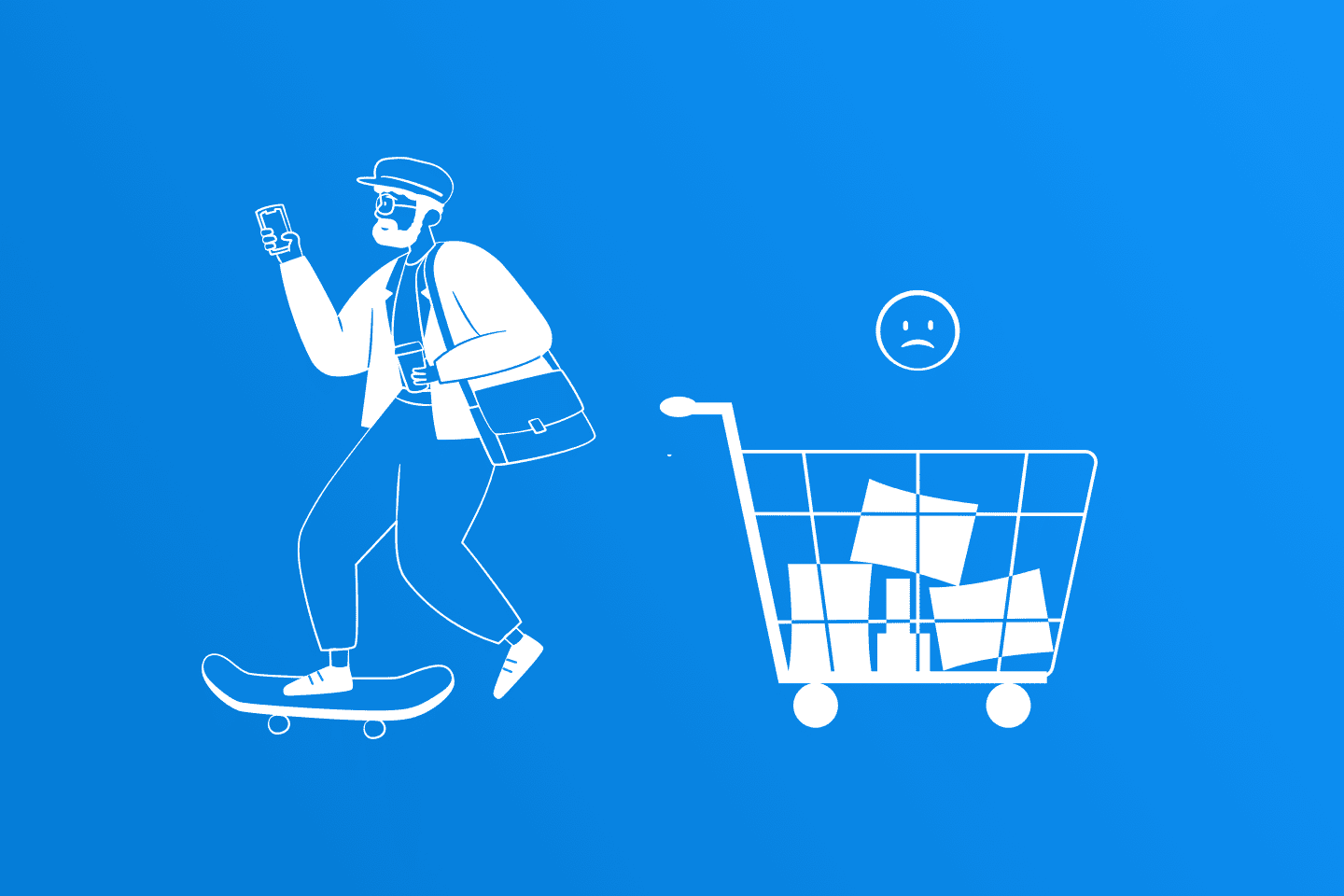The biggest challenge eCommerce businesses face these days is how to reduce cart abandonment rates. In fact, the average cart abandonment rate across industries is a staggering 70%.
That means that for every customer that ends up buying from you, two leave without completing the order. And that results in countless missed opportunities to grow your business, increase revenue, and build a stronger online presence.
According to data gathered by the Baymard Institute, 69.57% of shopping carts are abandoned by shoppers. Broken down by device, the highest rates of cart abandonment are from mobile phones (86%), followed by tablets (81%) and desktops (70%).
Collectively, eCommerce brands lose an astonishing $18 billion in annual sales revenue due to cart abandonment, according to Forrester Research.
Many wonder what a good conversion rate is, but in reality, there is no such thing. You should always aim to have a higher conversion rate than what you have right now. Anything above that proves that your efforts are paying off.
Why Do Clients Leave?
According to the CXL Institute, these are the top 5 reasons why people abandon shopping carts:
- High prices – If your prices are higher than those of your competitors, chances are customers are going to abandon their carts on your site and go shop elsewhere. If you don’t have a good value proposition that convinces the users to buy from you, then you have to have the best price and state it clearly.
- Shipping costs – Charging for shipping is often a downside and you should figure out a way to stop doing it.
- Hassle – Forcing customers to register in order to shop, or asking them for too much information via long forms.
- Doubt – Is the website trustworthy? Can I return the goods? How do I choose the right size?
- Slow site – This shouldn’t even be discussed anymore in the third decade of the 21st century.
Now that we have addressed these, let’s get into the 7 proven strategies that will help you reduce cart abandonment.
1. Implement Proactive Live Chat At Checkout Pages
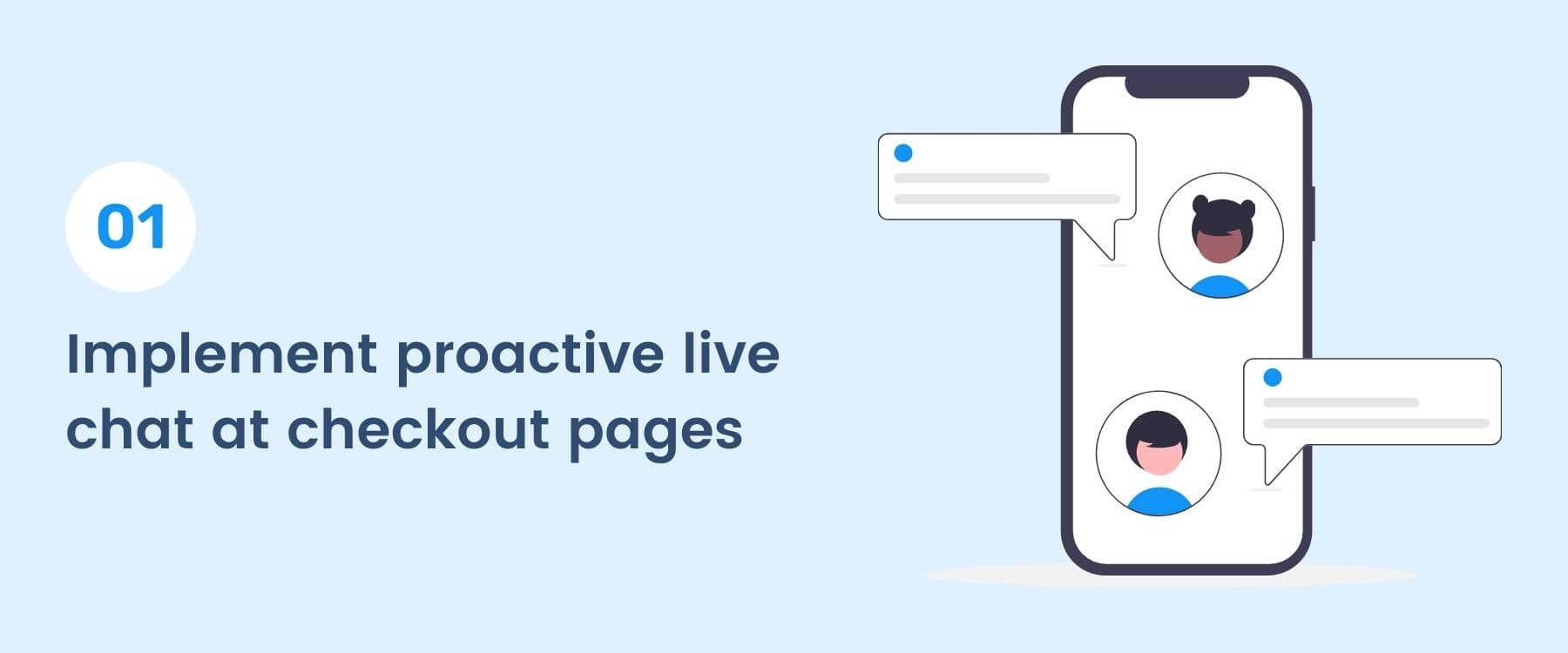
Proactive live chat can improve the customer conversion rate by as much as 40%. But despite that, many store owners are hesitant about implementing it. They fear that it might come off as intrusive instead of helpful.
But when done correctly, proactive chat can become one of the most powerful tools in your arsenal. And in most cases, your visitors will at least not dislike the idea of being able to chat, even if they don’t need the help at that moment.
When visitors spend a specific amount of time on a particular page, you can usually assume that they are looking into a topic or product. And when they’re reading and learning about what you offer, they will often have questions that need to be answered.
Before proactive chat, users would have to browse your site to manually find the answers they need. Or they would have to fill out a form and wait for an answer via email.
In other words, the process of getting answers involved a lot of effort. And that creates friction which makes people give up.
But, if you set up a helpful proactive chat pop-up, you will draw the attention of visitors who have a specific question in mind. Then, instead of having to look for ways to reach out, they can simply type in their question in the box and receive an answer right away.
When done correctly, proactive chats can improve customer engagement, boost conversions, and significantly reduce cart abandonment. The benefits of using it on your website greatly outweigh any possible negative experiences that might occur once in a while.
2. Offer Guest Checkout
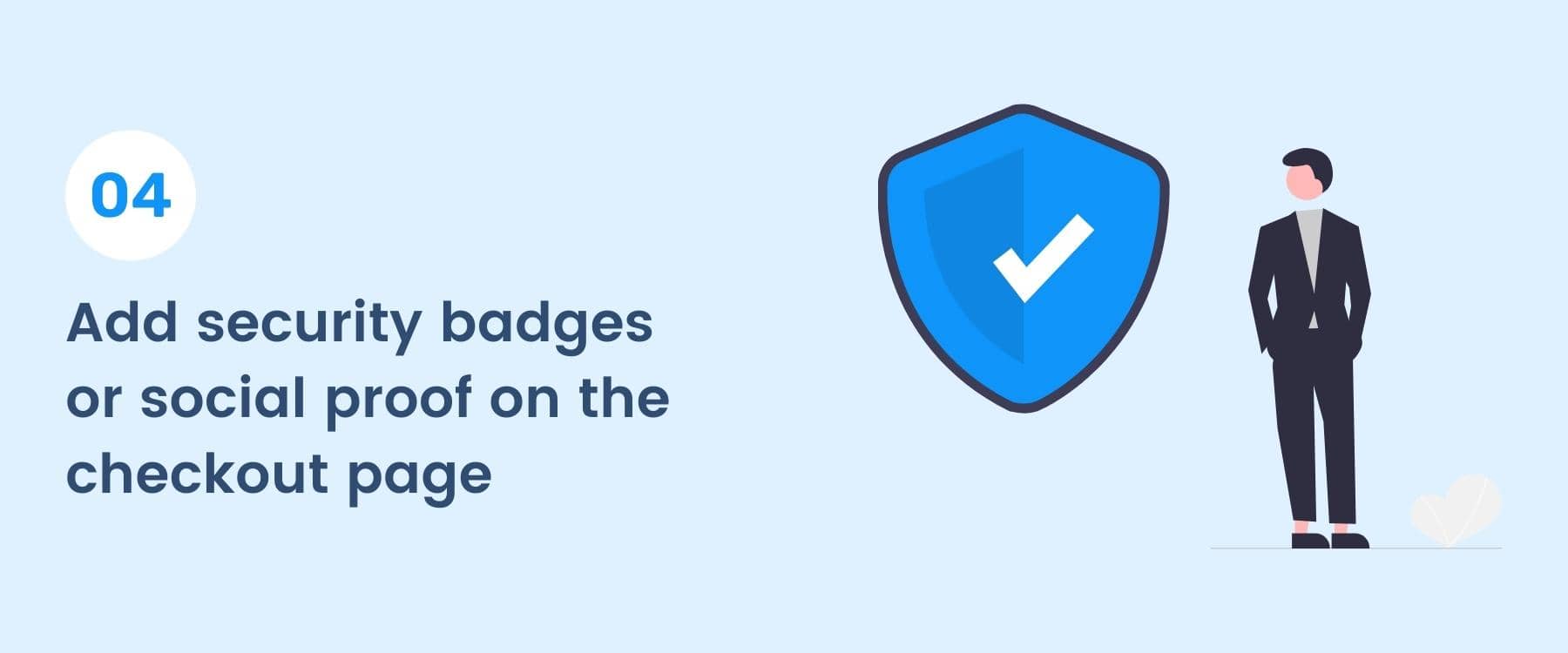
Even though there’s some debate about whether you should have guest checkout or encourage customer accounts, the overall consensus seems to be that the advantages of reducing checkout friction are worth it.
Having to fill out long forms is one of the top reasons people give up on their carts. So if your goal is to minimize cart abandonment, forcing registrations is something you will have to eliminate.
Sure, you can still give the opportunity to register and even encourage it with a small additional incentive. But you should always provide an alternative. Offer the opportunity to checkout as a guest. This saves a lot of time for new users.
One of the main reasons why first-time buyers can be hesitant about registering is that they might not know your brand very well. As you know, not all eCommerce stores value customer privacy and protect their data. Today’s users have to be vigilant about where they share their personal information.
Once the first purchase is made and you prove yourself as a reliable online business, there’s no reason why the customer couldn’t become a subscriber and even a regular customer.
But until you build that trust and develop a relationship with the customer, providing the option of shopping as a guest will almost always help reduce cart abandonment and boost sales.
3. Avoid Hidden Fees
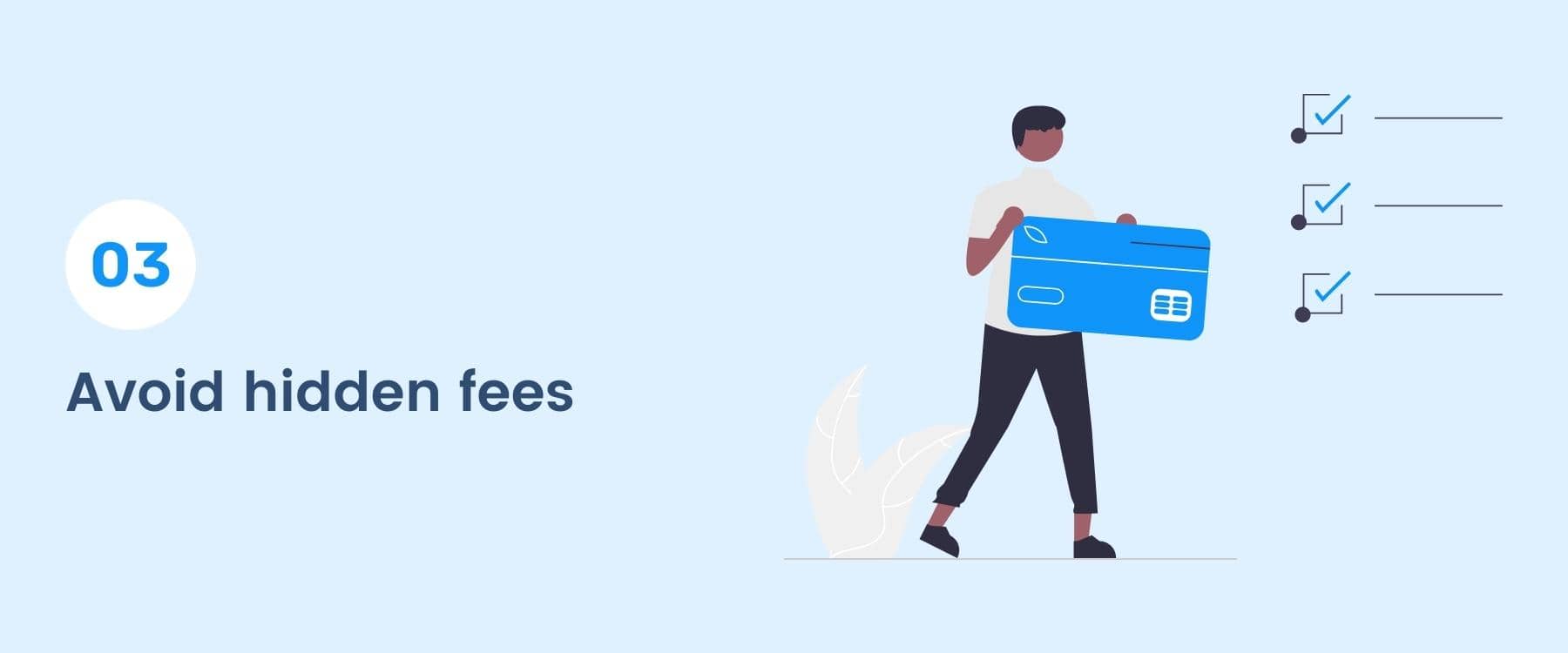
Hidden charges are one of the most frustrating parts of shopping online. You’re filling up your cart, expecting to pay a certain amount, and then you see additional fees for shipping, handling, administrative tasks, or a variety of other reasons.
All of these fees can have a significant impact on your cart abandonment. Even people who were excited about making a purchase can be quickly turned off by the sight of additional charges they did not expect.
In many cases, these charges will even make the customer trust you less because you showed a lack of transparency by not including every part of the cost into the original price.
It’s a gimmicky strategy used to trick online shoppers. You shouldn’t use it if you’re trying to build long-lasting relationships with your audience.
Meanwhile, if you’re transparent about the fees, you can even make it a part of your brand positioning. Emphasize that when customers shop with you, they can trust that the prices they see will be what they’ll have to pay.
To reduce friction even further, you could even consider calculating the shipping cost into the price of the products or at least having a purchase amount that includes free shipping.
4. Add Security Badges or Social Proof on the Checkout Page
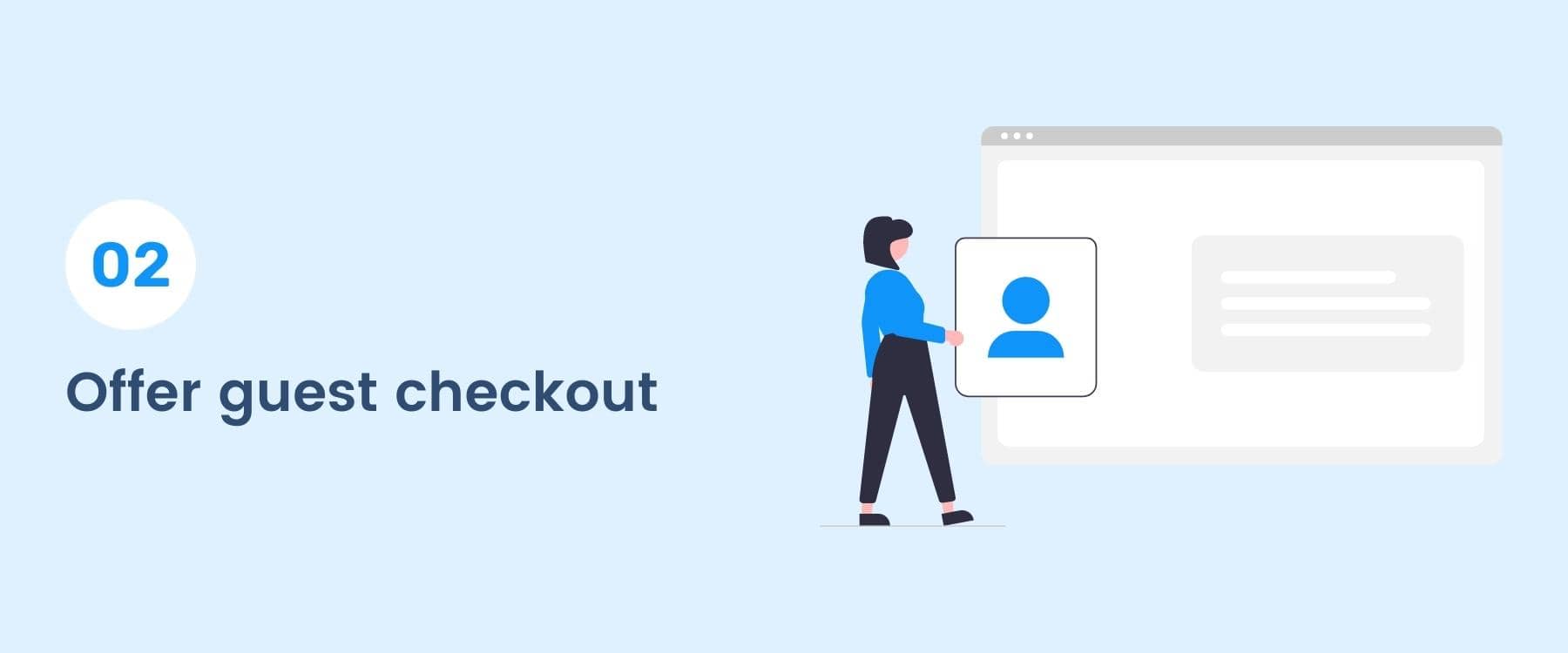
91% of shoppers read at least one review before making a purchase online. And that means that eCommerce stores that fail to incorporate social proof on their checkout pages are missing out on a massive opportunity to improve conversions in an instant.
Plus, 48% of people only buy products rated four stars or higher. And it becomes apparent that the only way to make shoppers trust your brand is through having other customers vouch for your products and company.
Luckily, there are many ways you can enhance your checkout pages with social proof that will provide peace of mind to your buyers.
For instance, you could set up a review section for each of the products, allowing shoppers to quickly go through some of the reviews, see what other people have to say, and evaluate whether the product is a good fit for their situation.
You could also add a few reviews or testimonials that talk about your store in general. If you get some positive reviews from happy customers, you could then showcase them on your checkout pages, removing the last bits of doubt that the customer might be having before completing the purchase.
Ideally, you want reviews that emphasize good product quality, excellent support, and fast product delivery, as these are some of the top priorities your audience is likely to have.
5. Quick Personalized Reactive Outreach
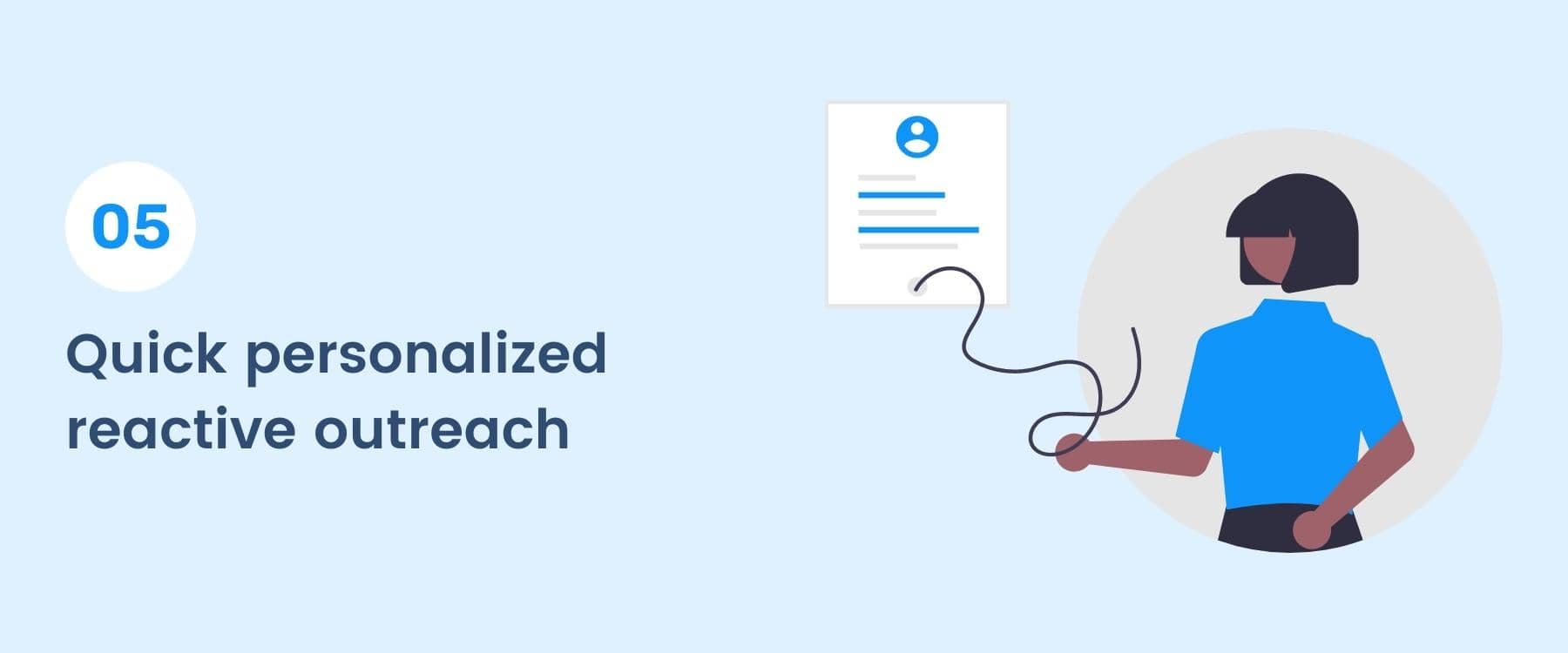
Making the sale online often comes down to how personalized you can make the shopping experience. And because of that, there’s no reason why you shouldn’t take the same approach when dealing with cart abandonment as well.
Brands like Amazon have perfected how they use reactive outreach to provide personal and relevant messages based on user actions.
If you can develop a cart abandonment outreach strategy that takes into account the needs of your buyers, you will usually see excellent results.
For instance, when someone fails to complete their purchase, there’s usually a reason why that’s the case. Perhaps there was unexpected friction in the buying process, or the buyer didn’t find the information they needed. By addressing these concerns head-on and providing reasons to buy, you can get more people to come back to their abandoned carts.
And as you learn more about your audience, you should use that to your advantage, tailoring messages to each situation and boosting the number of completed purchases in the process.
6. Reengage Customers With Email Marketing
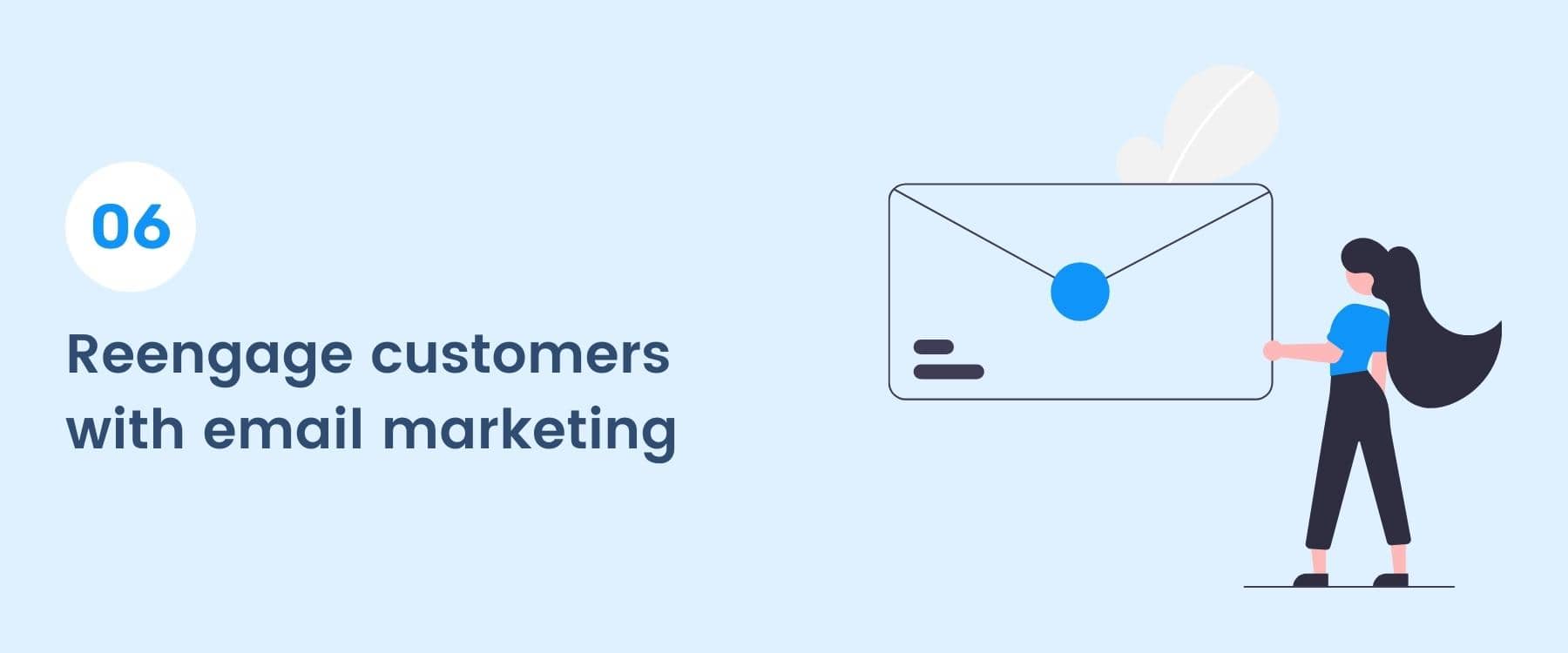
Email is a highly versatile channel and can be customized to fit many of your marketing goals. When executed correctly, email marketing can be a major source of revenue for your business, and the most successful eCommerce stores generate 30-40% of their sales from their email marketing efforts.
When it comes to recovering lost sales, an important part of your email marketing strategy is the creation of an effective cart abandonment flow. This involves personalizing your communications with your shoppers to pique their interest and nudge them to complete their purchases.
Depending on your eCommerce platform, you may already have a functioning cart abandonment flow. Shopify stores come with a standard flow, though CRMs like Klaviyo allow greater customizations and targeting in their flows.
Klaviyo allows you to customize the content in your cart abandonment emails, as well as branch the flow based on factors like the value of the item in the cart. The flow is triggered every time a shopper starts a checkout but fails to complete an order.
If you have more than one message in your flow, Klaviyo will check your flow filters before each SMS or email is sent out. This ensures that shoppers won’t receive the other messages in your flow if they complete their purchase after the first email is sent.
Cart abandonment recovery emails can be friendly and highly personalized reminders that encourage shoppers to complete their purchases.
Aside from the casual and emphatic tone, the shopper was also offered a major incentive: a promo code that unlocks a special discount. Other great features include a link back to the store (to enable the shopper to complete their purchase), as well as a deadline before the offer expires.
You can also incentivize shoppers by leveraging features like Klaviyo’s dynamic content block and go-to-cart button. The former allows you to add images, links, and other elements to your email. The latter, as the name implies, redirects the shopper back to their cart.
7. Close Sales With Recovery Specialists
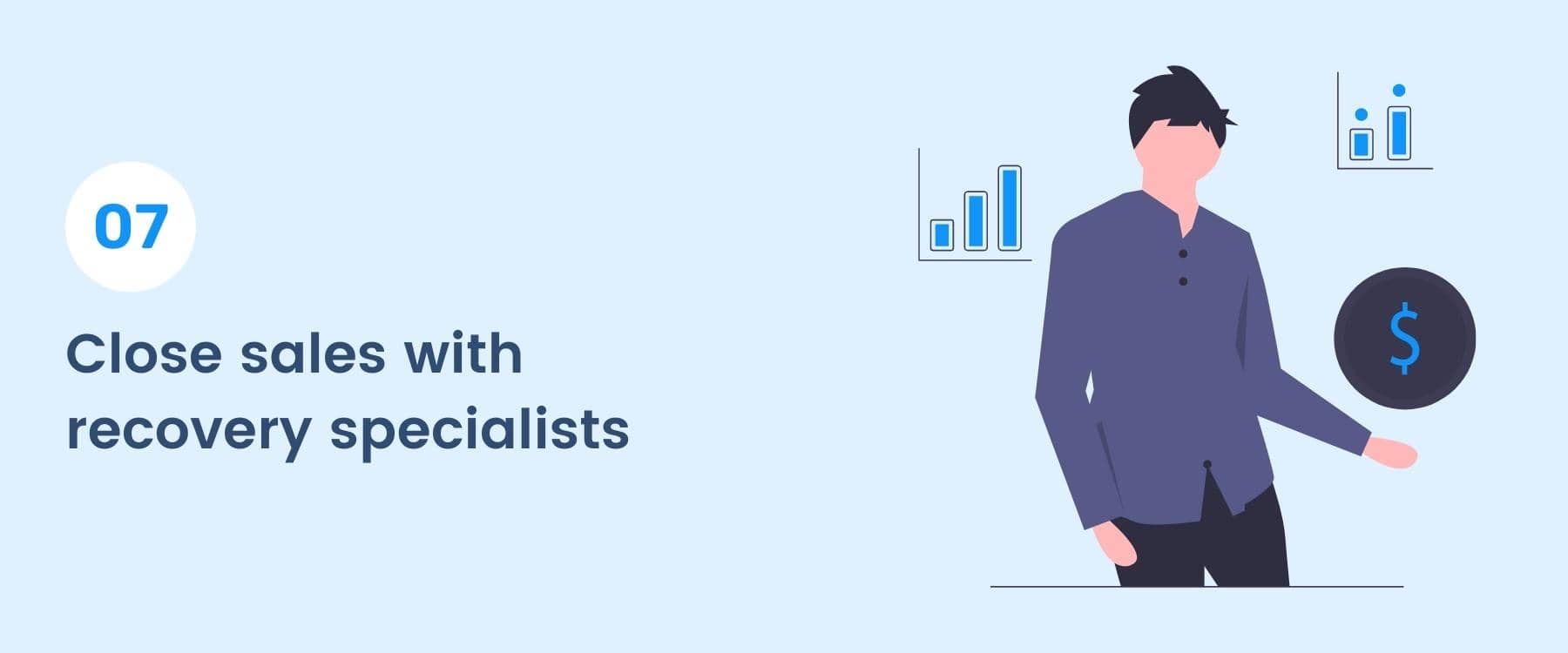
To reduce cart abandonment and recover lost customers, well these require a human touch to ensure a successful outcome and to keep your customers engaged. LTVplus guarantees both outcomes with its dedicated human cart abandonment recovery specialists.
By engaging with shoppers via text, email, phone, and chat, shoppers get a highly personalized experience and will be given access to exclusive deals that incentivize order completion. This could result in the recovery of more than 20% of your abandoned carts, resulting in a major boost in sales and revenue for your store.
Bottom Line
Reducing cart abandonment is one of the top issues eCommerce brands face. But while it’s impossible to completely eliminate it, there are methods you can use to gradually improve your conversions and remove as many barriers as possible from the buying process.
The seven tips listed above are a good starting point that will help you anticipate your buyers’ needs, address their concerns, and provide a quick and simple shopping experience.
